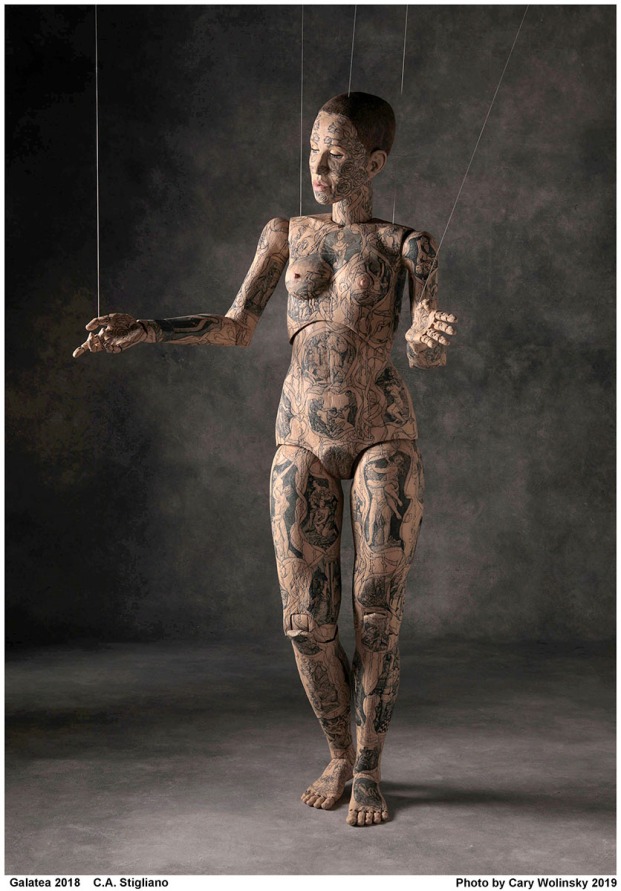
The thought-provoking woodcarvings of artist C.A. Stigliano will be the subject of an exhibition this fall in the Hammond Hall Art Gallery at Fitchburg State University.
“We Are Not Okay” will be on display from Monday, Oct. 21 through Friday, Dec. 13 in the art gallery inside Hammond Hall, 160 Pearl St. There will be an opening reception and artist talk at 3:30 p.m. Thursday, Oct. 24 at the gallery.
“This show, about the state of things in this country, in this culture, worries me,” Stigliano writes. “All of this work has been created in the past five years. The past five years have been a nightmare of disease and deception. We live in a culture that profits from anger and fear. If a person or a class or a tribe can be made angry enough, or fearful enough, they can be sold anything; a lie, or a gun, or a horribly unqualified candidate for office. Fear forces people to act, to buy, or to vote. Anger coupled with fear drives people to violence.”
And yet, he continued, he has hope. “I find hope in the angry voices of women who will not be forced back into the narrow choices of a century ago, and who refuse to sit quietly while their children go out into an unsafe world, and I find hope in those children, in the generations that have followed mine. So many of them look beyond their own welfare and so many are blessed with the will and the strength and the courage to fight.”
Stigliano, born in 1955, recently retired from a career in teaching that spanned nearly 50 years, primarily at the Massachusetts College of Art and Design.
Among the pieces in this exhibition is “Galatea,” a carved female nude with articulated joints that can be posed or manipulated as a puppet. It is five feet, eight inches tall, made of wood, and covered with tattoos. All of the images, 65 in total, are taken from works of art, and all represent or refer to violence against women. The originals from which they are derived are two and three-dimensional artworks dating from the 5th century BCE to the late 20th century.
“The title of the piece comes from the story of a legendary Greek sculptor named Pygmalion, who, unhappy with the women he has encountered in his life, creates Galatea, an ideal figure of ivory,” Stigliano writes. “He dresses the object in fine clothes and jewelry, creates for it a beautiful bed and prays to Aphrodite to give life to his creation.”
In the story, the fantasy becomes reality and the two live happily ever after.
“The idea that one can create a woman to suit one’s purposes is older than ancient Greece and not limited to sculptors and painters,” Stigliano continued. “The desire to create the perfect woman, coupled with the inability to remake a human being into that ideal, results in the inevitable failure of the fantasy. Too often, the heterosexual male reaction is violence. Traditional representation of the female in art bears a certain amount of responsibility for the promotion of this concept and the accompanying violence. The female nude comes with consequences."
